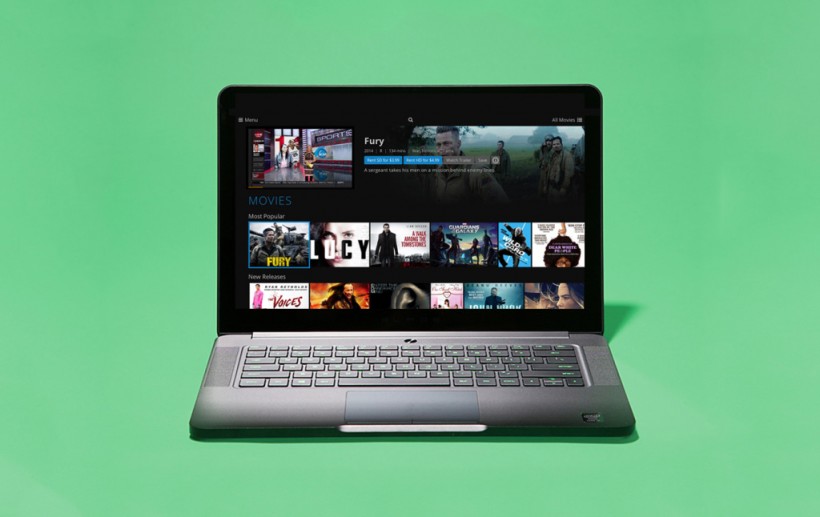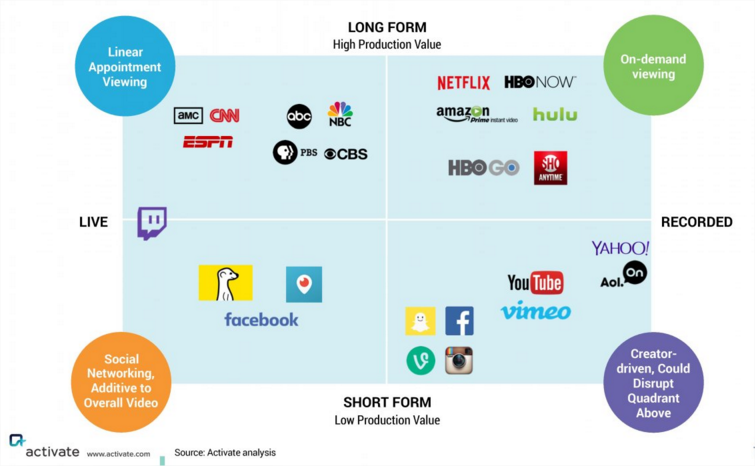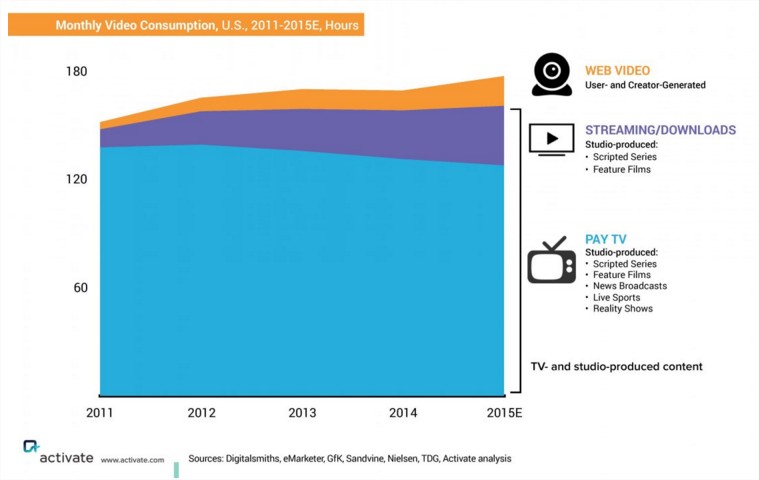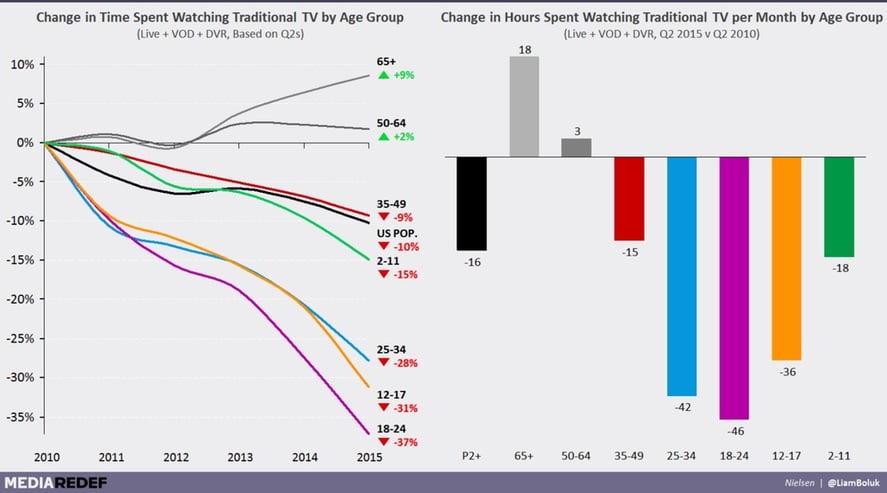Given the fact that the general video market is growing, it has not taken its final shape yet. Due to the market fragmentation and major disruptions taking place, it acts as a dynamic battle-ground where every player in the value chain tries to grab its share.
In this post we'll analyze what's casing the major change, the key trends forming the new landscape and how providers adapt.
Video market landscape: the 4 blocks
Looking at the colorful chart, we can split the whole market in 4 rather homogeneous quadrants:
- Linear video
- On-demand video
- Social networking and eSports video
- Creator-driven video.
These segments are differentiated by two main factors (axis): production value and time of consumption. The youngest and most innovative players are the on-demand services (high production value, recorded content) and the social, live streaming apps (low production value, live content). One brand that deserves a special mention is Twitch, the leading eSports and gaming streaming service. They managed to leverage the power of the community and social engagement to move competitive gaming closer to "real" sports.
Video consumption trends: streaming and user-generated video going up
A couple of significant movements have shaken the entertainment industry, with traditional TV networks starting to struggle with the new competitors doing their business online. Cable networks are witnessing steep decline, especially in the last six months of 2014. According to Deloitte’s latest Digital Democracy Survey, Americans now prefer to stream TV content (53%) rather than watch TV content live (45%).
Also, the web and user-generated video is slowly grabbing its share on behalf of Pay TV. With the emergence of the live streaming apps and the growing popularity of creator generated video on popular services (Youtube, Vimeo), consumers are loving any captured moment which enriches their viewing experience.
Millennials and the young population are driving behavioral trends
In the digital world, it’s typically the youngest generations which take the first steps towards new technologies. In the video world, the millennial generation and the younger are at the forefront of online adoption. According to the chart bellow (courtesy of MediaRedef) the 18-24 olds are the biggest cordcutters, currently abandoning traditional TV the most (37%). They watch 46 hours less live, VOD or DVR video via traditional TV sets, compared to 2010.
How is this data impacting the supply side?
The growing pressure from streaming giants like Netflix and Hulu and the fragmented audience are pushing more traditional TV providers to go directly to end-user, with over the top solutions and content. According to Ted Hall, research director at IHS Technology, “the traditional linear channel will be around for a long time to come, but it will become increasingly marginalized by a plethora of online services, from catch-up TV to TV Everywhere, pay TV channels’ streaming offerings and YouTube multi-channel networks.” The continued investments in original content and content acquisition is going to strengthen their position on short and long run.
Sports is also a very dynamic segment of entertainment. Live sports, especial the tier 1 sports, have been dominated by the large pay TV players. Rights management and economy of scale were the key factors why alternative publishers couldn't enter the big stage. Nowadays, we may be witnessing a change in this landscape. Yahoo and the NFL streamed the first regular-season game from one of the tier 1 sports, live, around the world. Other sports leagues and federations are also flirting with new streaming technologies to test its potential and the possible bottle-necks.
All these recent events are signaling change and exciting times are ahead.
Are you a video broadcaster or publisher? Try out Cleeng and sell your live and on-demand video now







